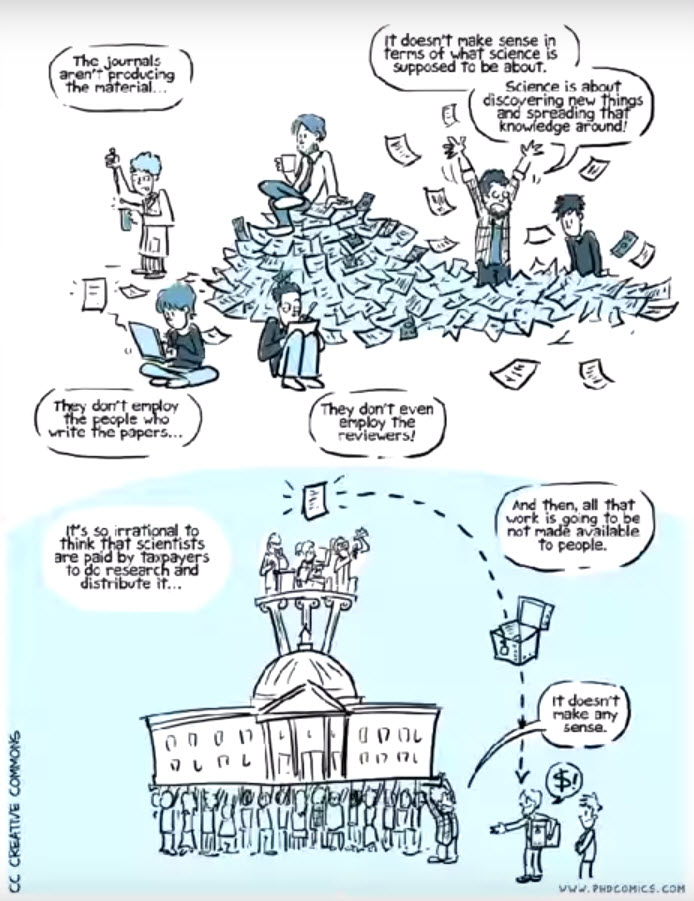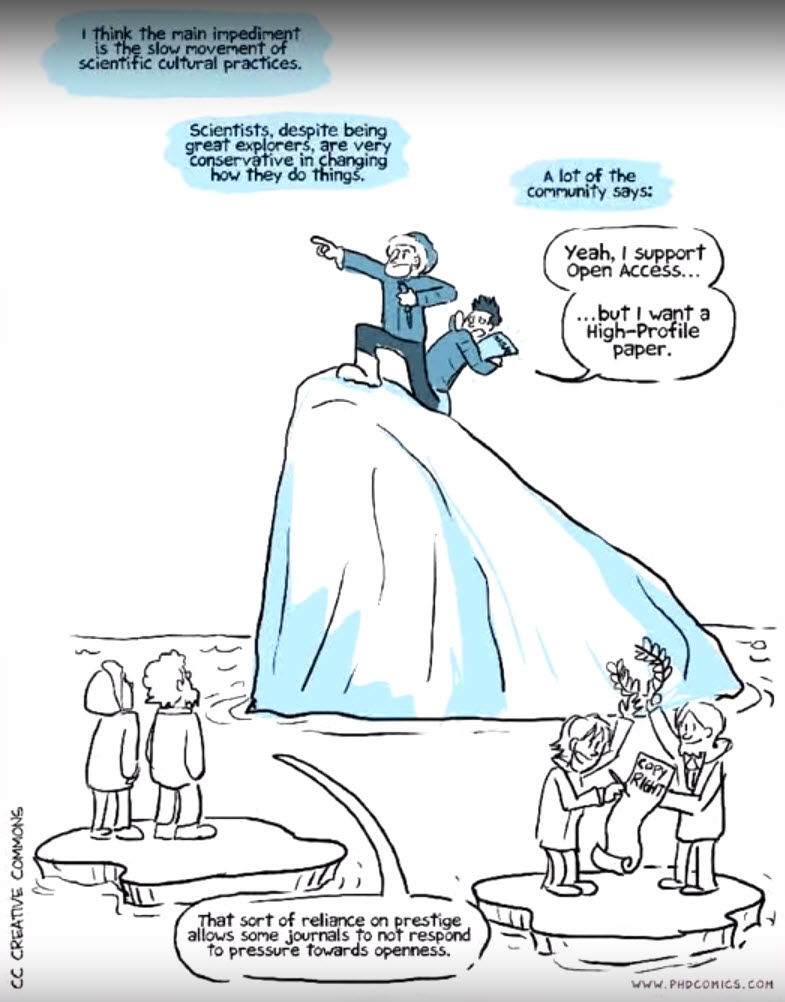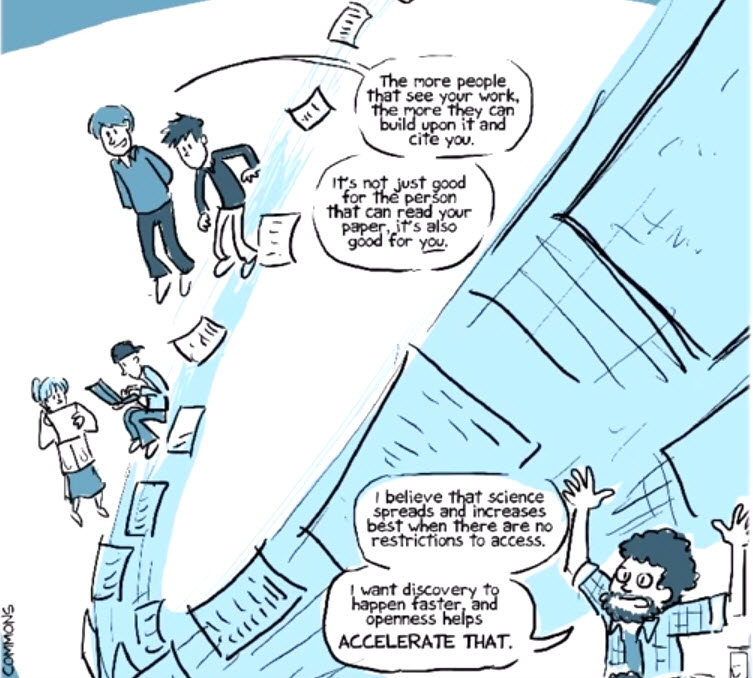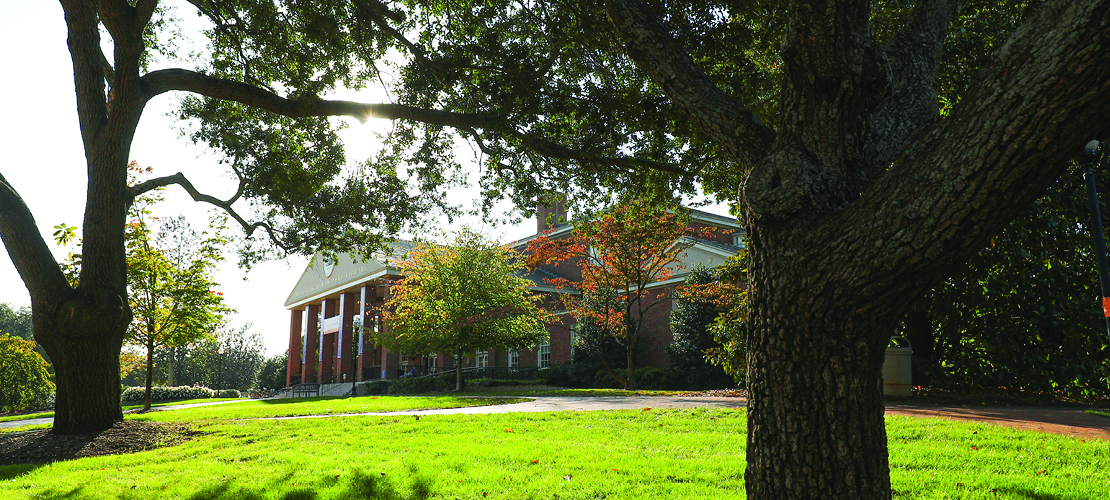What is Open Access? Open Access is free, immediate, online availability of research articles with full re-use rights.
Open Access is about making all scientific research content available for anyone anywhere in the world to read and access and build upon so people can do interesting things in new ways with the materials. The idea is to make the research literature more valuable.
The history of the model is that publishing scientific manuscripts was expensive. And so if you wanted your article distributed broadly and widely, you sent it to a journal. And then they would manage the review process and the communications with reviewers, and revisions, and eventually something would be accepted and they handled the typesetting and the printing and the distribution of your scientific work. And it worked! Science progressed and it became a good way to distribute scientific papers.
What’s changed is two things. First is digitization, you can now do everything electronically instead of printing it. And the second change is that journals started ratcheting up the price of subscriptions. And so those two things came to a head where it’s become almost the theater of the absurd with the amount that some journals want libraries to pay to subscribe to the journal.

Research has shown that journal prices have outpaced inflation by over 250% over the past thirty years. There are over 15 entire academic disciplines where the average price for one journal is over $1000 for one subscription for one year. In Chemistry the average journal title is $4227, in Physics $3649, in Botany $1781 and those are just the averages, those aren’t the “way out there” subscriptions. There’s a journal called Tetrahedron that’s $40,000.

The journals aren’t producing the material. The journals don’t employ the people who write the papers. They don’t even employ the people who review the papers. And it doesn’t make a lot of sense in terms of what science is supposed to be about. Science is supposed to be about discovering new things and spreading that knowledge around.
It’s so irrational to think that scientists are paid by taxpayers to do research and to discover things and distribute that and then two years of work by twenty people is going to be compressed into a paper and then not made available.

This problem of access is something people run into all the time without realizing it. A lot of people just sort of move on and think, “Well, this is the way it is.”
The main impediment is the slow movement of scientific cultural practices. Scientists despite being great explorers in terms of knowledge, are very conservative in changing how they do things. A lot of the community says, “Yeah, I support Open Access . . . but I want a high-profile paper.” That sort of reliance upon prestige, impact factor, and the name of the journal does allow some journals to not respond to the community pressure towards openness.

There’s no evidence that the scientific publishing model that we have now is optimal. We need to experiment with all sorts of different publishing systems. It’s really important that students join these conversations. There is a real benefit for researchers to care about Open Access. The more people that see your work, the more they can build upon it and cite you. It’s not just good for the person that can read your paper, it’s also good for you. Scientific knowledge spreads and increases best when there are no restrictions to access.

Licensed under Creative Commons by Nick Shockey and Jonathan Eisen.


